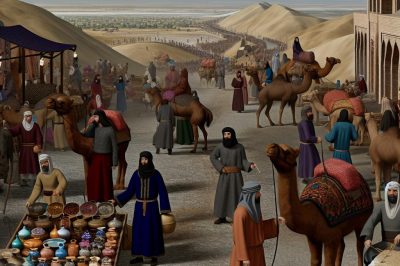Overview of the Silk Road
The Silk Road is an ancient network of trade routes that connected the East and West. It played a pivotal role in the cultural, commercial, and technological exchanges between these regions for many centuries. Spanning from China in the East to the Mediterranean in the West, this vast network covered parts of Asia, the Middle East, and Europe. Today, the term “Silk Road” evokes images of long caravans traversing vast deserts, bustling marketplaces teeming with traders, and a confluence of diverse cultures.
Historical Background
The term “Silk Road” was coined by the German geographer Ferdinand von Richthofen in the late 19th century as an apt description of the economic and cultural highway that once intersected Eurasia. Despite its name suggesting a singular route, the Silk Road encompassed numerous interconnected pathways. Originating during the Han Dynasty of China around the 2nd century BCE, the network reached its zenith during the height of the Roman and Chinese Empires, marking an era of significant global interaction.
Purpose and Commodities
While silk remains the most iconic commodity associated with the Silk Road, the network was integral to the trade of an array of goods. Spices, textiles, precious metals, and other valuable items traversed these routes. The significance of the Silk Road extended beyond mere trade; it was a conduit for the spread of ideas, culture, religion, and technology. A remarkable outcome was the dissemination of Buddhism from India to East Asia, facilitated by the network of roads and exchanges along the Silk Road.
Geographical Span and Routes
The geographical expanse of the Silk Road was not confined to a fixed set of paths. It varied over time, influenced by political dynamics and the natural landscape. Key segments typically passed through Central Asia, incorporating regions such as the Iranian Plateau and the Taklamakan Desert. These routes connected major cities like Samarkand, Bukhara, and Constantinople, serving as crucial nodes of trade and cultural exchange. The adaptability of these routes played a vital role in their longevity and effectiveness in connecting different regions of the world.
Cultural Impact
The Silk Road’s influence extended beyond trade to significantly impact the civilizations it connected. Through the exchange of knowledge, beliefs, and cultural practices, the societies along the route were enriched. This cosmopolitan interaction engendered advancements in arts, science, and technology. The Silk Road was more than a trade network; it was a bridge between worlds, fostering understanding and unity among diverse cultures.
The silk trade, therefore, symbolized not just economic prosperity but also a shared human experience characterized by collaboration, innovation, and cultural diffusion. The spread of technologies such as papermaking and printing along the Silk Road significantly impacted societies far beyond the confines of the roads themselves. Meanwhile, the cross-cultural interactions facilitated the exchange of scientific knowledge, medicinal practices, and artistic techniques, as well as promoting philosophies and religious beliefs.
For those seeking a deeper understanding of the Silk Road’s historical significance, further exploration can be done through resources like this site, which provides valuable insights into the socio-economic impacts of this ancient trade network through the ages.
In today’s interconnected world, the legacy of the Silk Road is still evident. It continues to inspire global cooperation and cultural exchange as modern trade and communication networks echo its once pioneering paths. Understanding the history of the Silk Road enhances our perception of how ancient interactions carved the modern world and continue to influence current global dynamics.
Thus, whether viewed as an economic powerhouse, a cultural melting pot, or a harbinger of globalization, the Silk Road remains a testament to the enduring power of trade and connection in shaping human history. The lessons imparted by this illustrious network resonate today, reminding us of the importance of openness, collaboration, and curiosity in fostering progress and peace on an international scale.





